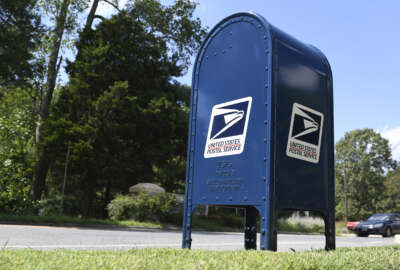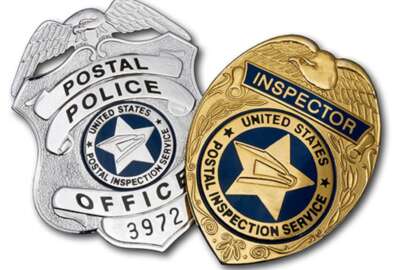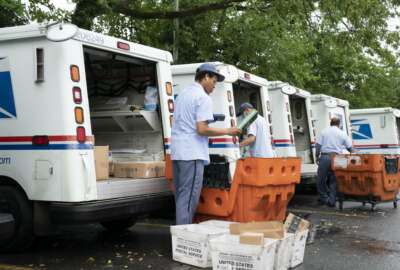USPS law enforcement makes 600-plus arrests amid ‘sustained crime wave,’ seeks more hires
The Postal Service’s law enforcement division is staffing up to respond to a “sustained crime wave,” and is taking steps to make USPS employees and collection...
The Postal Service’s law enforcement division is staffing up to respond to a “sustained crime wave,” and is taking steps to make USPS employees and blue collection boxes a harder target for criminals.
The Postal Inspection Service announced Wednesday it made more than 600 arrests since the launch of “Project Safe Delivery” in May, a multi-pronged effort to address a rise in mail theft cases.
USPIS said it made 109 arrests for alleged robbery, and more than 530 arrests in cases of alleged mail theft.
USPIS Chief Postal Inspector Gary Barksdale told reporters that the initial results of Project Safe Delivery have been “impactful,” but said more work needs to be done.
“As our nation continues to address a sustained crime wave, our targeted focus to crack down on postal crime is more critical than ever,” Barksdale said.
USPIS doesn’t yet have a complete picture of the total number of mail theft and robbery arrests made in fiscal 2023, but Barksdale said arrests are on the rise.
“When it comes to arrests, obviously, we’re seeing more arrests,” Barksdale said.
USPIS in its latest annual report to Congress said it made 1,258 mail-theft arrests in fiscal 2022, and that 1,188 of those cases resulted in convictions. That same year, USPIS made 100 robbery arrests, which led to 68 convictions.
USPIS has seen a 49% decrease in mail theft arrests between FY 2018 and 2022, and a 43% decrease in mail theft convictions over the same period.
Criminals are robbing letter carriers for their arrow keys, which open blue collection boxes, to steal mail and packages, as well as commit financial crimes — including altering checks and committing check fraud.
Barksdale said USPIS is “targeting the entire network” of criminals targeting USPS employees and blue collection boxes.
“They’re a little more complex cases to arrest anyone involved, whether you’re stealing the arrow key from a letter carrier, or whether you’re the person that’s negotiating the stolen check at a bank,” he said.
To stay ahead of a rise in postal crimes, Barksdale said USPIS is also looking to hire more postal inspectors “in the immediate future.” The agency is accepting applications for open postal inspector positions through Nov. 1.
“We’re not at full complement, but we do plan to get to full complement very quickly,” Barksdale said.
The USPS Office of Inspector General, in a recent report, found that USPIS is operating at 88% of its authorized staff level. In April 2023, it had 1,208 active postal inspectors and 348 active postal police officers who secure USPS facilities.
In an OIG survey of USPIS staff who worked on mail theft cases from FY 2021-2022, about 38% of employees reported a challenge in the availability of staff to work mail theft cases.
USPS installs high-security blue collection boxes, considers removing others
USPS recently installed more than 10,000 high-security blue collect boxes across the country, which are expected to be a harder target for criminals to exploit.
Barksdale said the new high-security blue collection box “basically disincentives anyone to rob our letter carriers, because the key itself will not open the boxes with the lock system.”
The agency saw more than 38,500 mail theft incidents from blue collection boxes in FY 2022 — an 87% increase compared to mail theft incidents in 2019.
USPS Chief Retail and Delivery Officer Joshua Colin said USPS will add 42,5000 electronic locks to blue collection boxes across the country in the coming months. However, he said USPS may need to remove some blue collection boxes that criminals keep targeting.
“In specific locations where a blue box is a repeated crime target, and our mail density is very low, collection boxes may have to be removed entirely, when access is not meaningfully diminished due to nearby access points,” Colin said.
Colin said letter carriers have the discretion to refuse delivery in high-crime areas, and should call 911 and USPIS if criminal activity prevents them from making a delivery.
“We trust our letter carriers [and] their judgment. They’re out there every day delivering mail to every community in the country, and they have the proper training to ensure when they recognize those threats, to make the right decision for their safety, as well as the safety of the mail,” Colin said.
Brendan Donahue, USPIS assistant postal inspector in charge, said letter carriers and other USPS are trained to comply with an assailant’s demands if they are being robbed.
“Nothing is more valuable than their life,” Donahue said.
USPS employees are instructed to remember and write down as many details about an assailant as possible, and report those details immediately to law enforcement. Employees should also report suspicious activity around postal facilities to USPIS and call 911.
Tighter security for USPS arrow keys
USPIS, as part of Project Safe Delivery, is holding “surge operations,” where it deploys postal inspectors to areas with high incidents of mail theft. The agency said it recently held surge operations in Chicago, San Francisco, and cities across Ohio.
As part of these surge operations, postal inspectors are inventorying missing arrow keys.
Colin said USPS recently launched a pilot program in several cities where USPS will conduct a daily validation of arrow keys.
“If they are missing, it will funnel up to headquarters, for us to review and ensure we take the proper steps to secure the keys,” Colin said.
Prior to the pilot, USPS facilities were supposed to conduct a monthly inventory of arrow keys.
In the coming months, USPIS will continue to collaborate with local state and federal law enforcement and conduct additional targeted search operations, focused on high postal crime areas.
In August, USPIS increased monetary awards for information leading to the arrest and conviction of a perpetrator of mail crime.
USPIS now offers up to $100,000 for information on crimes involving theft of mail or USPS property.
The agency offers up to $250,000 for leads in the murder or manslaughter of a USPS employee or contractor, and up to $150,000 for information concerning the assault or robbery of a USPS employee.
To avoid becoming a target for mail theft, USPIS encourages households to remove mail from their mailbox every day and to avoid leaving outgoing mail sitting in their mailbox.
The agency also encourages customers to drop off mail in a secure location — such as inside a nearby post office or their place of business — or hand it directly to their letter carrier.
“Every postal customer deserves to have their mail sent and delivered to its intended destination untampered or impeded by a criminal actor,” Barksdale said.
AI to curb change-of-address, counterfeit postage
USPS is also seeing recent security measures curb a spike in change-of-address fraud.
Since May 31, post offices now offer an “enhanced” in-person change of address service, and require customers requesting the service to present a government ID.
USPS Chief Information Officer Pritha Mehra said USPS received more than 29 million change-of-address requests last year, and that 0.05% of customers were affected by change-of-address fraud.
“Identity theft is a growing concern that impacts millions of individuals globally. These individuals have had their personally identifiable information compromised by criminals leveraging it for financial motives,” Mehra said.
With these new security controls in place, Mehra said USPS is seeing a 99.3% year-over-year decrease in the volume of fraudulent change of address submissions it receives.
USPS is also using artificial intelligence and machine tools to identify and intercept packages with counterfeit postage labels.
Mehra said USPS using these AI/ML tools is able to detect the weight and dimensions of packages and ensure there’s a record of payment for postage.
“The work that we’re doing is continually improving as we’re getting more and more technology in to detect what packages haven’t been paid for, and then also to intercept them,” Mehra said.
Mehra said USPS has seen a 50% reduction in packages attempted to be delivered using counterfeit postage.
She said USPS is intercepting fraudulent packages in most of its plants, and plans to soon expand its efforts to all facilities processing mail.
USPS is using these counterfeit postage detection tools to go after criminals who are sending illegal shipments of fentanyl and other drugs into the United States.
The Justice Department earlier this month announced indictments against eight China-based chemical manufacturers and their employees related to shipping fentanyl and meth.
“These indictments were a result of an inspection service investigation of a narcotics trafficker utilizing counterfeit postage labels and highlight the unique jurisdiction of the inspection service,” Mehra said.
Barksdale called the indictments “a win in our battle against counterfeit postage and those seeking to use the nation’s mail system to distribute dangerous substances.”
Copyright © 2025 Federal News Network. All rights reserved. This website is not intended for users located within the European Economic Area.
Jory Heckman is a reporter at Federal News Network covering U.S. Postal Service, IRS, big data and technology issues.
Follow @jheckmanWFED






